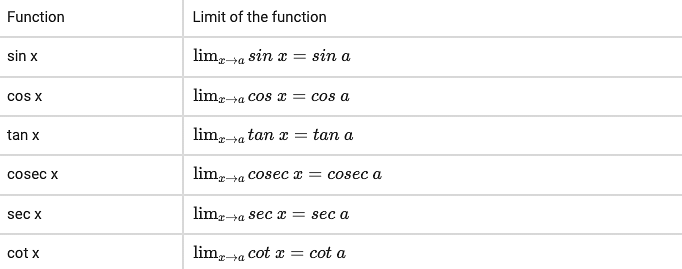The value of \(\displaystyle \lim_{x \to0} \frac{\sqrt{\frac{1}{2} \left(1-\cos2x\right)}}{x}\)
The value of \(\displaystyle \lim_{x \to0} \frac{\sqrt{\frac{1}{2} \left(1-\cos2x\right)}}{x}\)
- 1
- -1
- 0
- none of these
The Correct Option is D
Approach Solution - 1
Approach Solution -2
To evaluate the limit
\[\lim_{x \to 0} \frac{\sqrt{1 - \cos 2x}}{\sqrt{2}x},\]
we need to proceed carefully with the trigonometric identities and the properties of limits.
First, we use the double-angle identity for cosine:
\[\cos 2x = 1 - 2 \sin^2 x.\]
Thus,
\[1 - \cos 2x = 1 - (1 - 2 \sin^2 x) = 2 \sin^2 x.\]
Substituting this into the expression, we get:
\[\frac{\sqrt{1 - \cos 2x}}{\sqrt{2}x} = \frac{\sqrt{2 \sin^2 x}}{\sqrt{2}x}.\]
Since \(\sqrt{2 \sin^2 x} = \sqrt{2} |\sin x|\), the limit becomes:
\[\frac{\sqrt{2} |\sin x|}{\sqrt{2} x} = \frac{|\sin x|}{x}.\]
We now consider the limit:
\[\lim_{x \to 0} \frac{|\sin x|}{x}.\]
For \(x\) close to 0, \(\sin x \approx x\), so:
\[\frac{|\sin x|}{x} \approx \frac{|x|}{x}.\]
We analyze the behavior of \(\frac{|x|}{x}\) as \(x\) approaches 0 from the left and the right:
- As \(x \to 0^+\), \(\frac{|x|}{x} = \frac{x}{x} = 1\).
- As \(x \to 0^-\), \(\frac{|x|}{x} = \frac{-x}{x} = -1\).
Since the left-hand limit and the right-hand limit are not equal, the overall limit does not exist. Therefore, the limit
\[\lim_{x \to 0} \frac{\sqrt{1 - \cos 2x}}{\sqrt{2} x}\]
does not exist.
So The Correct Answer is Option (D): None of these
Top Questions on limits of trigonometric functions
- The value of \( \lim_{x \to 0} \left( \frac{\tan 11x}{\tan 5x} \right) \) is:
- GATE MN - 2025
- Engineering Mathematics
- limits of trigonometric functions
- Find the value of the following expression: \[ \tan^2(\sec^{-1}4) + \cot(\csc^{-1}3) \]
- MHT CET - 2025
- Mathematics
- limits of trigonometric functions
- Given a real-valued function \( f \) such that: \[ f(x) = \begin{cases} \frac{\tan^2\{x\}}{x^2 - \lfloor x \rfloor^2}, & \text{for } x > 0 \\ 1, & \text{for } x = 0 \\ \sqrt{\{x\} \cot\{x\}}, & \text{for } x < 0 \end{cases} \] Then:
- BITSAT - 2024
- Mathematics
- limits of trigonometric functions
- Evaluate the limit: \[ \lim_{\theta \to \frac{\pi}{2}} \frac{8\tan^4\theta + 4\tan^2\theta + 5}{(3 - 2\tan\theta)^4} \]
- TS EAMCET - 2024
- Mathematics
- limits of trigonometric functions
- If \( f(x) \) is defined as follows:
\[ f(x) = \begin{cases} \frac{x - \lfloor x \rfloor}{x - 2} & \text{if } x = 2 \\ \frac{|x - \lfloor x \rfloor|}{a^2 + (x - \lfloor x \rfloor)^2} & \text{if } 1 < x < 2 \\ 2a - b & \text{if } x = 1 \end{cases} \]
Then the limit \( \displaystyle \lim_{x \to 0} \frac{\sin(ax) + x \tan(bx)}{x^2} \) is:- AP EAPCET - 2023
- Mathematics
- limits of trigonometric functions
Questions Asked in JEE Advanced exam
As shown in the figures, a uniform rod $ OO' $ of length $ l $ is hinged at the point $ O $ and held in place vertically between two walls using two massless springs of the same spring constant. The springs are connected at the midpoint and at the top-end $ (O') $ of the rod, as shown in Fig. 1, and the rod is made to oscillate by a small angular displacement. The frequency of oscillation of the rod is $ f_1 $. On the other hand, if both the springs are connected at the midpoint of the rod, as shown in Fig. 2, and the rod is made to oscillate by a small angular displacement, then the frequency of oscillation is $ f_2 $. Ignoring gravity and assuming motion only in the plane of the diagram, the value of $\frac{f_1}{f_2}$ is:

- JEE Advanced - 2025
- Waves and Oscillations
The reaction sequence given below is carried out with 16 moles of X. The yield of the major product in each step is given below the product in parentheses. The amount (in grams) of S produced is ____.

Use: Atomic mass (in amu): H = 1, C = 12, O = 16, Br = 80- JEE Advanced - 2025
- Organic Chemistry
Let $ a_0, a_1, ..., a_{23} $ be real numbers such that $$ \left(1 + \frac{2}{5}x \right)^{23} = \sum_{i=0}^{23} a_i x^i $$ for every real number $ x $. Let $ a_r $ be the largest among the numbers $ a_j $ for $ 0 \leq j \leq 23 $. Then the value of $ r $ is ________.
- JEE Advanced - 2025
- binomial expansion formula
- The total number of real solutions of the equation $$ \theta = \tan^{-1}(2 \tan \theta) - \frac{1}{2} \sin^{-1} \left( \frac{6 \tan \theta}{9 + \tan^2 \theta} \right) $$ is
(Here, the inverse trigonometric functions $ \sin^{-1} x $ and $ \tan^{-1} x $ assume values in $[-\frac{\pi}{2}, \frac{\pi}{2}]$ and $(-\frac{\pi}{2}, \frac{\pi}{2})$, respectively.)- JEE Advanced - 2025
- Inverse Trigonometric Functions
Let $ \mathbb{R} $ denote the set of all real numbers. Then the area of the region $$ \left\{ (x, y) \in \mathbb{R} \times \mathbb{R} : x > 0, y > \frac{1}{x},\ 5x - 4y - 1 > 0,\ 4x + 4y - 17 < 0 \right\} $$ is
- JEE Advanced - 2025
- Coordinate Geometry
Concepts Used:
Limits of Trigonometric Functions
Assume a is any number in the general domain of the corresponding trigonometric function, then we can explain the following limits.

We know that the graphs of the functions y = sin x and y = cos x detain distinct values between -1 and 1 as represented in the above figure. Thus, the function is swinging between the values, so it will be impossible for us to obtain the limit of y = sin x and y = cos x as x tends to ±∞. Hence, the limits of all six trigonometric functions when x tends to ±∞ are tabulated below:
